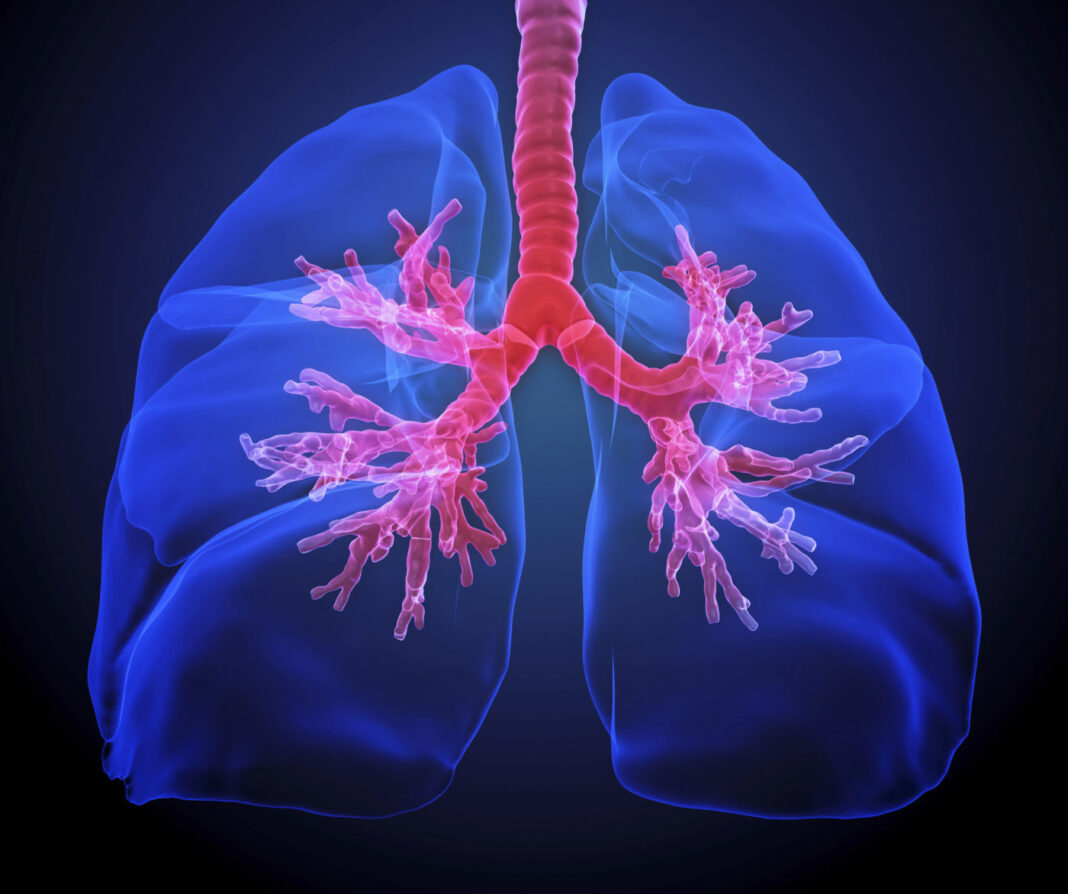Using nanoparticles coated in mannose, a type of sugar, scientists at the University of Illinois, Chicago (UIC), have developed a treatment for pulmonary fibrosis. Their findings in animal models hold promise for potentially treating the disease.
The new study is published in the journal Proceedings of the National Academy of Sciences in a paper titled, “Nanoparticle Targeting of de novo Pro-fibrotic Macrophages Mitigates Lung Fibrosis.”
“The pathogenesis of lung fibrosis involves hyperactivation of innate and adaptive immune pathways that release inflammatory cytokines and growth factors such as tumor growth factor (TGF) β1 and induce aberrant extracellular matrix protein production,” the researchers wrote. “During the genesis of pulmonary fibrosis, resident alveolar macrophages are replaced by a population of newly arrived monocyte-derived interstitial macrophages that subsequently transition into alveolar macrophages (Mo-AMs). These transitioning cells initiate fibrosis by releasing profibrotic cytokines and remodeling the matrix. Here, we describe a strategy for leveraging the up-regulation of the mannose receptor CD206 in interstitial macrophages and Mo-AM to treat lung fibrosis.”
“The body’s inflammatory processes are very complex and finding treatments for diseases that result from lingering or excessive inflammation are very difficult because the treatments that prevent harmful inflammation also, unfortunately, prevent helpful inflammation which fights infections and heals injuries,” said Abhalaxmi Singh, PhD, visiting research assistant professor in the department of pharmacology and regenerative medicine at the UIC College of Medicine. “To have a targeted treatment that addressed a root cause of harmful inflammation work in an animal model is exciting.”
The coated nanoparticle treatment stops fibrosis by binding to a subset of macrophages that have a receptor called CD206, which is hyper-expressed in patients with pulmonary fibrosis.
The scientists found that the macrophages that cause lung fibrosis have very high levels of mannose.
“Macrophages are exciting, complex cells and the approach Singh and our team took in coating the nanoparticle with sugar to bind to the mannose receptor is an intriguing and precise way to ensure targeted delivery of a silencing RNA treatment to this subset of cells that contribute to fibrosis,” said Asrar Malik, PhD, the Schweppe Family distinguished professor and head of the department of pharmacology and regenerative medicine.
The team has already started testing the treatment in human lung tissue samples with colleagues at the University of California at San Francisco.
“The findings point to the potential utility of mannosylated albumin nanoparticles in delivering TGFβ-siRNA into CD206+ profibrotic macrophages as an antilung fibrosis strategy,” the researchers wrote.






